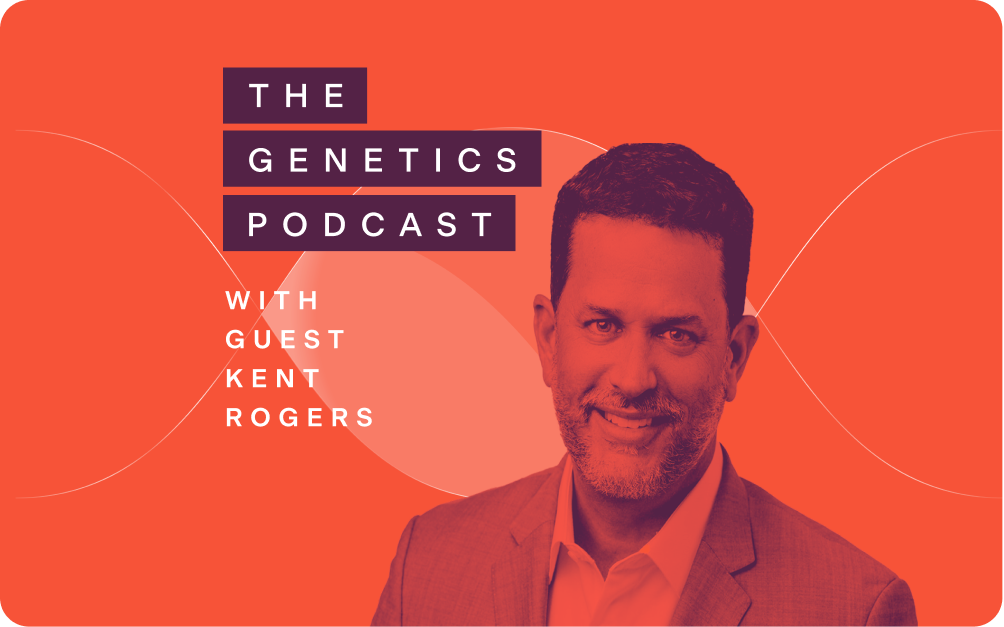Podcast recap: Kent Rogers on building a path for N-of-1 therapies and transforming rare disease treatment

In a recent episode of The Genetics Podcast, Patrick spoke with Kent Rogers, CEO of EveryONE Medicines, about the future of individualized medicines, especially in ultra-rare diseases. With over 30 years in the pharmaceutical and healthcare sectors, spanning big pharma, payers, biotech, and venture capital, Kent shared how his experience has positioned him to take on one of medicine’s most urgent and complicated challenges: developing scalable treatments for conditions that affect only a handful of patients worldwide.
A personal mission born from a breakthrough
EveryONE Medicines was founded with a powerful story at its core. Julia Vitarello, the mother of a young girl named Mila diagnosed with an ultra-rare neurodegenerative disease, collaborated with Dr. Timothy Yu of Boston Children’s Hospital to create the world’s first individualized antisense oligonucleotide (ASO) therapy. This “n-of-1” approach opened the door to a new model of medicine – one that EveryONE Medicines is now aiming to systematize.
Kent describes how he was drawn to the company not just because of its noble mission, but because it offered the rare opportunity to bring together all facets of his career (regulatory science, payer strategy, commercial operations, and startup innovation) to solve a problem that’s more logistical than scientific.
Why antisense oligonucleotides?
Kent describes ASOs as a sweet spot in modern medicine: simple, precise, and surprisingly easy to make. Unlike gene therapies that target DNA, ASOs work at the RNA level, fixing tiny “spelling mistakes” in how genes are read. And because they’re made through a chemical process rather than grown in cells, they tend to be more stable, easier to scale, and often more affordable than complex gene or cell therapies.
But the major hurdle isn’t chemistry; it’s regulation. Current frameworks were built for blockbuster drugs tested in large populations over many years. They don’t account for conditions with 1–10 patients globally. This is where EveryONE Medicines is pushing the boundary.
Partnering with regulators to scale
Rather than developing a single therapy for a single patient and stopping there, Kent’s team is working on grouping similar ultra-rare conditions and variants together, enabling the regulatory system to evaluate them as a platform. By presenting regulators with multiple ASOs that share the same manufacturing and preclinical processes, they aim to demonstrate repeatability, consistency, and safety, which are the core principles of any drug approval process.
This platform approach, Kent says, mirrors what’s already happening in fields like cancer vaccines and medical devices. The hope is that, once the platform is accepted, future therapies can be developed and approved more rapidly and affordably.
Why Europe and the UK are leading the way
Kent notes that while the FDA has taken steps toward addressing the rare disease challenge, progress is slow. The UK, on the other hand, has emerged as a surprisingly nimble partner. Not only has the UK declared rare diseases a public health priority, but it’s also working on systemic changes that go beyond just drug approval, looking at how diagnosis, care coordination, and access can be transformed for rare patients and families.
The UK’s NHS Rare Disease Action Plan has been especially welcoming to new ideas, creating space for innovative approaches like EveryONE Medicines. As a result, the company is flipping the usual playbook, starting trials and gathering evidence in Europe first, with the hope that regulators in the US will take notice and follow their lead.
Redefining what success looks like
One of the most moving parts of the conversation comes when Kent and Patrick talk about the real-world definition of efficacy in ultra-rare diseases. In diseases that progress rapidly and fatally, even small improvements like slowing decline, extending life by a few months, and preserving motor function, can be significant for families. The challenge is how to translate these meaningful outcomes into clinical endpoints regulators can use.
Kent says that a flexible, case-by-case approach is essential, one that accounts for the full burden of illness, including the emotional and economic toll on families and health systems alike.
Leadership lessons from both sides of the table
Having worked both for pharmaceutical companies and major payers, Kent shares that drug developers often misunderstand what payers actually want: not expensive therapies, but predictable value. The earlier that commercialization, reimbursement, and patient access strategies are built into development, the more likely a therapy is to succeed.
He also reflects on his leadership style: build a small, empowered team of people who are smarter than you, stay humble, and prioritize mission alignment above all.
What’s next for EveryONE Medicines?
As the company begins its first trials, Kent says they’re not looking to grow quickly. The focus remains on quality, speed, and thoughtful execution. The team is looking to collaborate with families, clinicians, and researchers who are facing dead ends in the rare disease space, and focused on making a difference.
Listen now:
